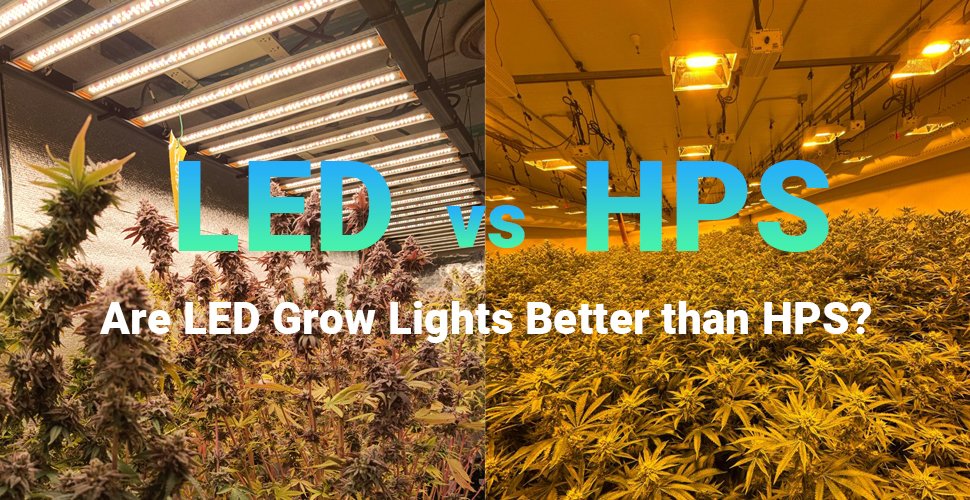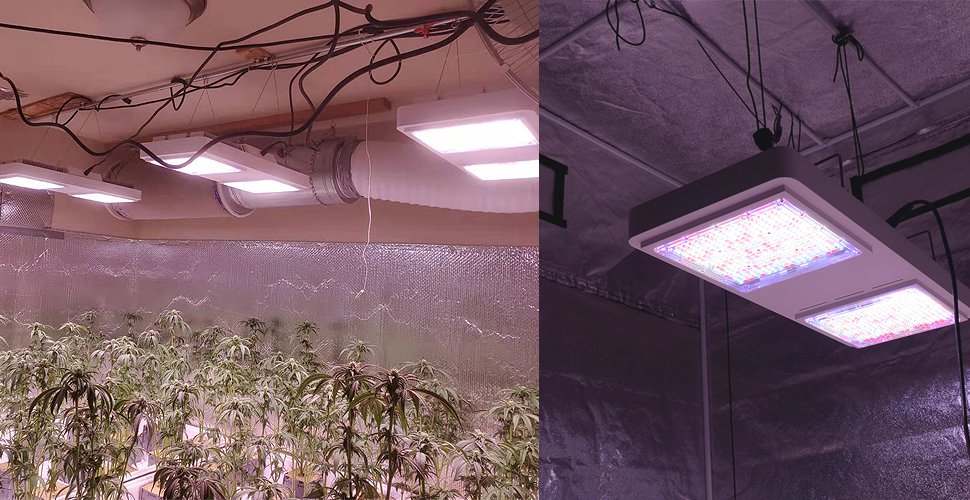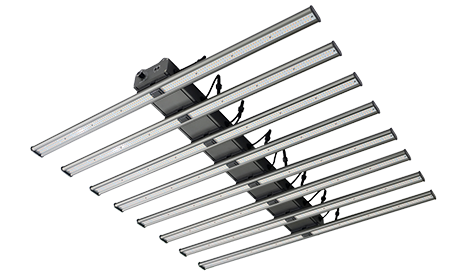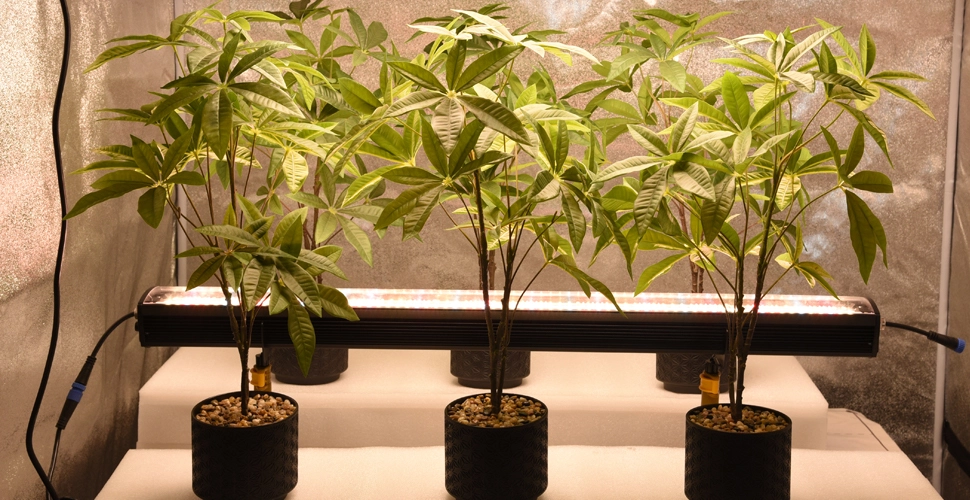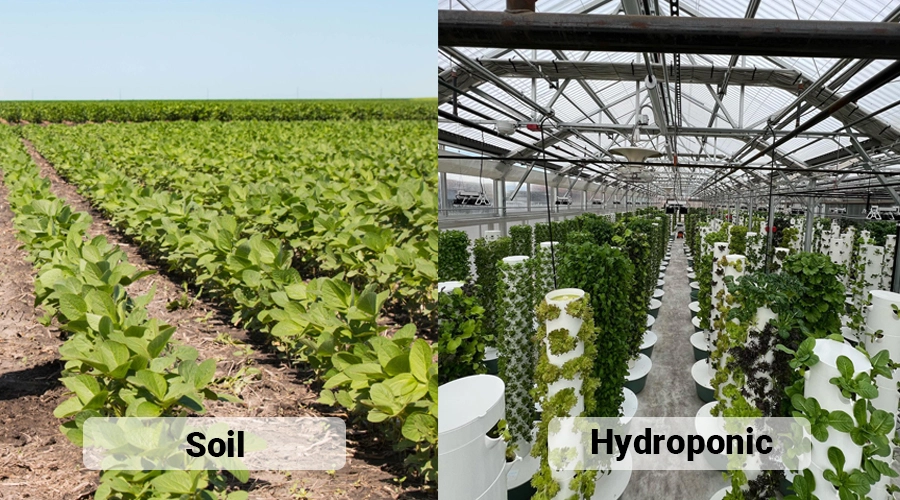Table of Contents
Today, I saw a professional grower on LinkedIn who said that I don’t want to “upgrade” to your LEDs. This statement gave me the sense that whether using growing cannabis with LED grow lights or high pressure sodium grow lights. In each other’s minds, Light is Light.
Lost in thought, LED is an anecdotal and unstoppable trend to replace the traditional household incandescent lamps, instead of car halogen xenon lamps. In the past, LED grow lights was not strong enough, expensive and did not have the best spectrum for plant growth, making HPS lights the only option for indoor gardening.
But what was right in the past may not be so today. LED technologies advance has changed the growing game and brought about a change in business models, and sooner or later LED grow lights for cannabis will completely replace high-pressure sodium lamps.
What is better for growing LED or HPS is a long-standing debate in the horticultural industry. There are many supporters on both sides. Here, I will briefly explain LED vs HPS side by side. As for which option is right for you, it all depends on your hobby, your financial ability, and your view on growing games.
I’m sure that you who are reading this article, like any competitive commercial grower, have been looking at opportunities for innovation and optimization. Come together and keep reading.
LED Lighting Trends 2023
The global indoor plant growth light market is expected to be worth $4.23 billion in 2021, with a compound annual growth rate (CAGR) of 15.0% from 2022 to 2030.
According to the picture, LED is the best performer in this trend.
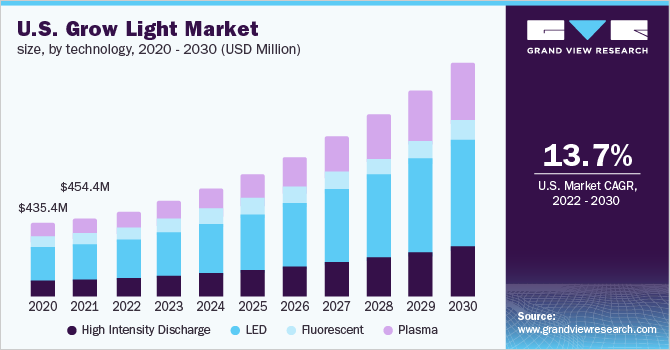
The growing global population, increasing popularity of urban farming, vertical farming, and eco-friendly production of fruits and vegetables are driving the growth of the market. Moreover, vertical farming practices of producing food in vertically stacked layers such as used warehouses, skyscrapers, or containers are driving market growth.
According to the U.S. Fox News report on April 1 local time, the U.S. government is preparing to implement a nationwide ban on commonly used incandescent light bulbs.
It is reported that the Department of Energy (DOE) finalized regulations banning the sale of incandescent light bulbs by retailers in April 2022 and will take effect on August 1, 2023.
The U.S. DOE has now urged retailers to begin selling the transitioned light bulb types and has begun issuing warning notices to companies in recent months. The regulation will save consumers about $3 billion annually in electricity costs and reduce carbon emissions by 222 million tons over the next 30 years.
According to regulations, incandescent and similar halogen bulbs will be banned and replaced by light-emitting diodes (LEDs).
The development of things is a spiral and wave forward, LED from the most unpopular, evolved into the current trend a significant trend. Although the road is winding, the future is bright.
We sincerely appeal to everyone to contribute to our efforts to combat global energy shortage and climate change.
Do LED Grow Lights Get As Hot As HPS Grow Lights?
High-Heat HPS Lights
HPS produces a lot of heat and is suitable for colder areas or cold climates. It improves flowering, as in tomatoes and peppers, which can benefit from a slight increase in temperature to initiate flowering and fruiting. The heat from HPS increases photosynthesis and increases cannabis flowering.
To be perfectly honest, HPS lights generate so much heat that growers need to invest more money in cooling technology. The excess heat from these lights can also be a safety hazard, especially if you have to replace those bulbs or ballasts.
However, too much heat can lead to slow and stunted plant growth, and similarly, a lot of heat can lead to dehydration of the plant. Growers can be uncomfortable with hot growing area environments and setting optimal temperatures in confined spaces can be challenging.
Low-Heat LED Grow Lights
LED lights produce very little heat, reducing the risk of plant damage. It maintains a more comfortable indoor environment, reducing the need for additional cooling or ventilation equipment for growers and plants. More importantly, LED grow lights are safe for humans.
On the other hand, LEDs emit very little heat, which may make it difficult to achieve uniform coverage over large areas.
Differences in Spectrum
High pressure sodium grow lights emit wavelengths in both the yellow color and red spectrum. It is ideal for most plants that are fruiting and flowering, as red light is essential for vigorous flowering and high yields.
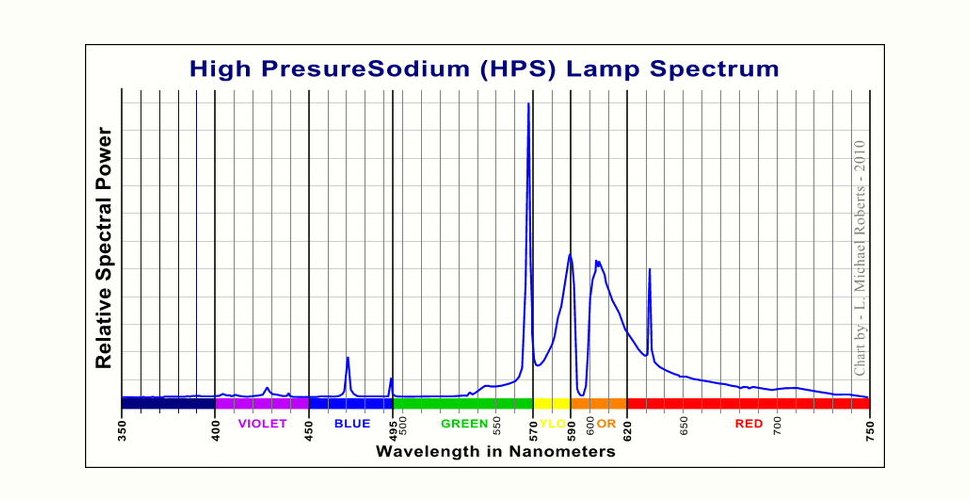
And LED cannabis light can be designed to emit the full spectrum, including UV, blue, green, red and far red. Each type of light is important at all stages of plant growth. Blue light helps promote seedling germination and root development. Red light regulates plant growth and helps plants flower and produce fruit. Ultraviolet light helps plants produce improved cannabis flavor and quality.
You can also check out this blog post to learn are full spectrum grow lights better.
Many professional LED grow light companies now have the ability to customize the light’s spectrum to meet specific plant needs. If you need insight into a custom spectrum, you can contact Auxgrow for information.
Application Scenarios
Both are suitable for indoor plant growth, but they differ in their applicability scenarios due to their different characteristics.
Due to the high heat output of HPS, they are most commonly used in commercial greenhouse environments or large indoor grow operations. You can visit a commercial grow facility near you and you will find that the grow lights HPS will be farther away from the cannabis plants.
However, LED grow lights are more versatile and they are well suited for small-scale indoor gardening, large commercial greenhouse environments or home use. You may notice that inside a grow tent or in a small room, the autoflower LED light distance is short because of the superior low heat output of LEDs.
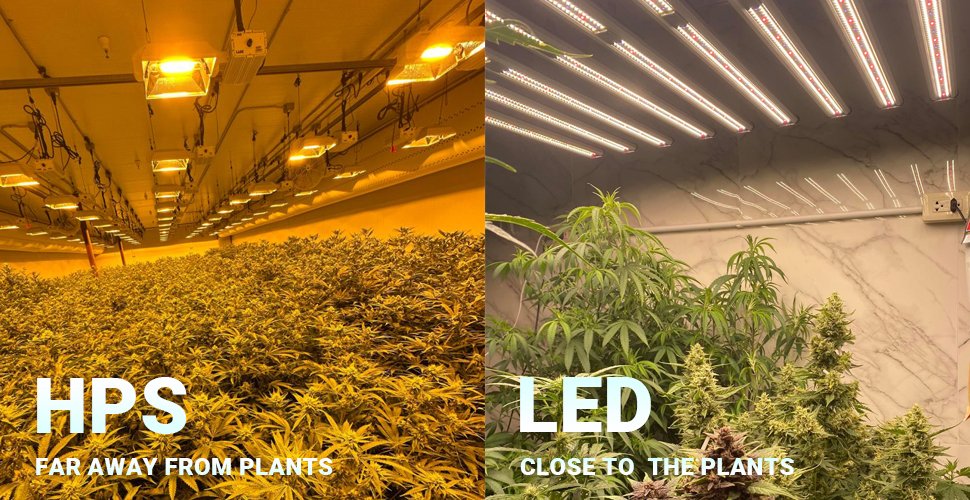
Comparing LED vs HPS Costs
HPS Grow Lights
HPS grow lights have a low initial investment. However, the intense lighting of HPS necessitates adequate airflow and ventilation. The HPS grow environment is very dependent on the need for additional cooling or ventilation equipment.
HPS has a very short life expectancy and needs to be replaced after about 8-12 months. The labor cost of replacing lamps is a recurring cost, especially for large plantings with thousands of lamps.
In the long run, HPS growing lights will add significantly to maintenance costs.
LED Grow Lights
In contrast, LED plant grow lights require a higher upfront investment. However, no additional ventilation system is required with them. And you save on cooling costs. LED grow lights typically have a lifespan of 50,000 to 10,000 hours.
In fact, some growers are torn between the two simply because they want to know what’s more cost-effective. LEDs are much more efficient than HPS lights, which allows them to use fewer watts to achieve the same or higher output.
As an example, our Auxgrow GT05 (800W LED grow light) produces higher light output than a standard 1000 watt HPS grow light, while consuming 25% less power. Some people may think it doesn’t produce as much energy as a 1000w HPS grow light. Could it be that in their perception, 800W is less powerful than 1000W HPS because of its lower wattage?
However, it can reach a PPFD value of 1444 μmol/㎡. It emits the same photon energy as a 1000w HPS grow light, which means that it produces the same growth effect as a 1000w HPS.
In the long run, this 800W LED lighting grow system will pay for itself, while the 1000W system will end up costing more electricity costs. This is because the 800W system requires 880 kWh for a full grow, while the 1000W system requires 1200 kWh per grow.
One more important point is that Auxgrow GT05 provides proper convenience. Simply install the LED light directly in its original location, and you can operate this simple job yourself, i.e. save the labor cost of replacing the light.
In the long run, LED is more money-saving.
Do LED Grow Lights Yield More than HPS Lamps?
In addition to LED vs HPS electricity cost, growers are definitely more focused on LED vs HPS yield comparison.
We took a look at what Swell Farmacy has to offer in 2019 through fixture innovation and optimization. the Swell Farms team tested this by swapping out 20 HPS lights for 20 LEDs. Check out the details here.
Girl Scout Cookie
Girl Scout Cookies is a plant that is extremely sensitive to the high intensity of HPS lights. With LED grow lights and a mixed spectrum, a little higher up in the canopy, they actually get that awesome little bug formation.
Under HPS grow lights:
Total THC %: 25.17
Total Cannabinoids %: 28.67
Total Terpenes %: 1.31
Under HPS grow lights:
Total THC %: 25.17
Total Cannabinoids %: 28.67
Total Terpenes %: 1.31
White Widow and Bruce Banner
Introducing White Widow in the LED grow room. Teams watched in admiration the results of nourishing this shorter plant with spectrum-shifting lighting. He pointed out the tightly packed nodes, more so than those in the HPS room.
Under HPS grow lights:
Total THC %: 15.91
Total Cannabinoids %: 18.17
Total Terpenes %: 2.09
Under LED grow lights:
Total THC %: 21.79
Total Cannabinoids %: 24.72
Total Terpenes %: 2.64
As for the Overall Chemical Profile:
- Under LED, the total THC percentage was over 24% higher.
- Under LED, the total CBD percentage was over 23% higher.
- Under LED, the total Terpene percentage was over 22% higher.
What LED is Equivalent to A 1000W HPS?
When you want to replace all your HPS fixtures but don’t know how to choose LED plant lights, turn your attention to our GT05, 1:1 replacement HPS fixture.
Auxgrow GT05, which I just cited above, is specifically designed to be a direct replacement for HPS luminaires. It exceeds the performance of the 1000W HPS plant grow light.
It impressive 1960 µmol/s output, PAR efficacy reaches up to 2.45umol/J for more crop-loving light at up to 25% energy savings vs. Same effect and performance as GAVITA CT 1930e LED. It is an affordable alternative to GAVITA.

The compact design of this 1000w HPS LED replacement fits directly into a standard HPS setup, making it easier than ever to upgrade and convert your lighting to LED technology!
Carry incidentally, the US DLC (DesignLights Consortium) has released the official version 3.0 of the technical requirements for plant lighting. The requirements increase the plant lighting effectiveness (PPE) threshold to a minimum of 2.30 μmol/J, which is a 21% increase over the PPE threshold in version 2.1.
This PPE threshold set for LED plant lighting is 35% higher than the PPE threshold for 1000W double-ended HPS lamps. In terms of PPE value, Auxgrow GT05, LED replacement for 1000w HPS is compliant with DLC 3.0 certification requirements.
What is Better for Growing LED or HPS?
After reading this article about the differences, you should know that both options have their pros and cons. You should have a direction on LED or HPS for autoflower to choose from.
For HPS users, replacing all the lamps with LEDs is more than just an upgrade to the lamps, it’s more about the grower’s habits.
But why do you have to get used to what you’re used to? If you grow any crop that produces substantial value, spending a little more on your lights will yield a multiplier return on your investment after a few plantings.
HPS growing lights are good, but LEDs are better. LED grow lights are superior to HPS in every way. If you are really serious about your profit stream, and actual ROI, I hope you will gradually accept the LED intelligent light system is an absolute game changer.
With long-term savings, investing in a quality LED grow light system is the way to go.
The same as LED with HPS, we can’t wait to see what this industry evolves into with the younger generations of cannabis enthusiasts.
Jayes
As a Digital Marketing Manager at AUXGROW, Jayes combines a passion for hydroponic systems and expertise in LED grow lights. With hands-on experience and a deep understanding, Jayes guides you through the world of sustainable cultivation.

